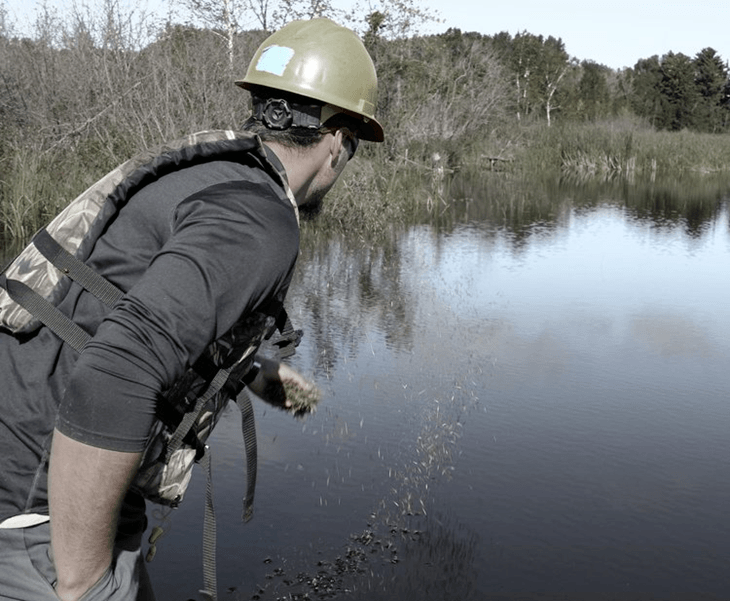Better Food from Better Water


White rice is a staple in a very large part of the world, but it’s wild rice – Minnesota’s State Grain – that has a special presence here. Perhaps it’s because such a large percentage of its total production occurs in Minnesota that we love this gluten-free, protein-rich grain that’s the sine qua non ingredient of the eponymous soup and many a stuffing recipe.
Recently, Conservation Corps Minnesota & Iowa (CCMI) had an opportunity to plant wild rice in parts of the St. Louis River where it once grew abundantly. They also learned important lessons about how Native Americans view the land, the water and about what they see as their responsibility to the St. Louis River and its estuary.
Undaunted by naysayers who told them wild rice wouldn’t grow, CCMI joined an effort led by the Fond du Lac Band of Lake Superior Chippewa and others to undo destruction caused by industrial development that had reduced to almost nothing plantings that had once covered 2,000 to 3,000 acres. The project’s goal is to restore 250 acres during the next five to ten years.

The Fond du Lac resource management team sourced wild rice seed from other areas in Minnesota and used air boats to plant. It was a catch-as-catch-can process, as the team had to modify its schedules to work around what was, at best, a sporadic seed delivery schedule. Over three days, a nine-member CCMI crew from Moose Lake and a field specialist planted 10,000 pounds of wild rice, adding to the total of 12,000 pounds planted in 2016.
2016 was the second year of a three-year planting plan. 2015 results saw success in every bay in which the seeds were planted, but hungry Canada geese ate a significant portion of that year’s yield. The Fond du Lac resource management team is working to mitigate the problem.
An important benefit of the project was the opportunity to work with Tom Howes, the natural resources director for the Fond du Lac band. Tom taught the CCMI crew about the special relationship it has with the river and about the responsibility they feel to care for it. The band considers the river “a place of abundance” and an integral component of its community.
Thanks to the restoration efforts of the Fond du Lac tribe and the support of the CCMI crew, that abundance will grow well into the future.